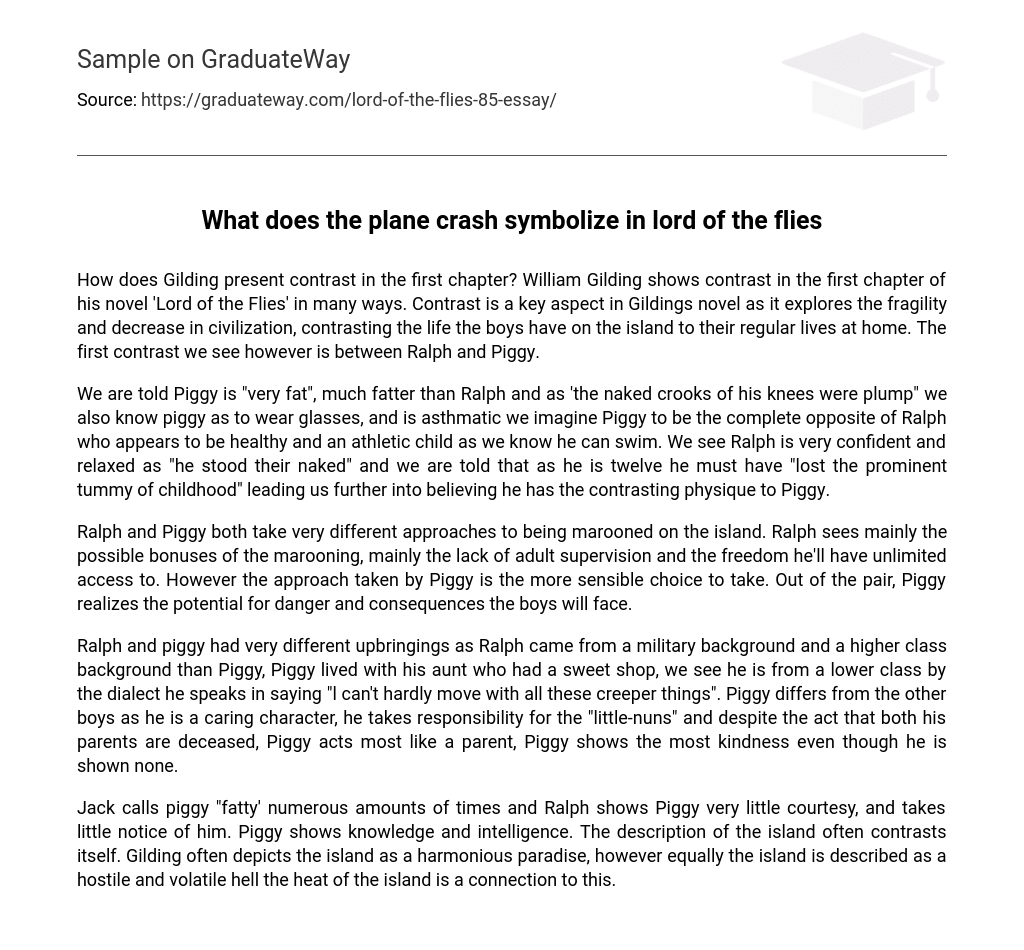How does Gilding present contrast in the first chapter? William Gilding shows contrast in the first chapter of his novel ‘Lord of the Flies’ in many ways. Contrast is a key aspect in Gildings novel as it explores the fragility and decrease in civilization, contrasting the life the boys have on the island to their regular lives at home. The first contrast we see however is between Ralph and Piggy.
We are told Piggy is “very fat”, much fatter than Ralph and as ‘the naked crooks of his knees were plump” we also know piggy as to wear glasses, and is asthmatic we imagine Piggy to be the complete opposite of Ralph who appears to be healthy and an athletic child as we know he can swim. We see Ralph is very confident and relaxed as “he stood their naked” and we are told that as he is twelve he must have “lost the prominent tummy of childhood” leading us further into believing he has the contrasting physique to Piggy.
Ralph and Piggy both take very different approaches to being marooned on the island. Ralph sees mainly the possible bonuses of the marooning, mainly the lack of adult supervision and the freedom he’ll have unlimited access to. However the approach taken by Piggy is the more sensible choice to take. Out of the pair, Piggy realizes the potential for danger and consequences the boys will face.
Ralph and piggy had very different upbringings as Ralph came from a military background and a higher class background than Piggy, Piggy lived with his aunt who had a sweet shop, we see he is from a lower class by the dialect he speaks in saying “l can’t hardly move with all these creeper things”. Piggy differs from the other boys as he is a caring character, he takes responsibility for the “little-nuns” and despite the act that both his parents are deceased, Piggy acts most like a parent, Piggy shows the most kindness even though he is shown none.
Jack calls piggy “fatty’ numerous amounts of times and Ralph shows Piggy very little courtesy, and takes little notice of him. Piggy shows knowledge and intelligence. The description of the island often contrasts itself. Gilding often depicts the island as a harmonious paradise, however equally the island is described as a hostile and volatile hell the heat of the island is a connection to this.





